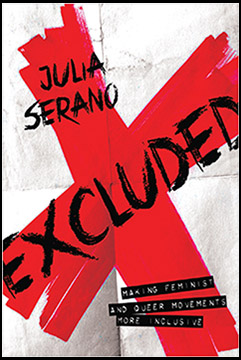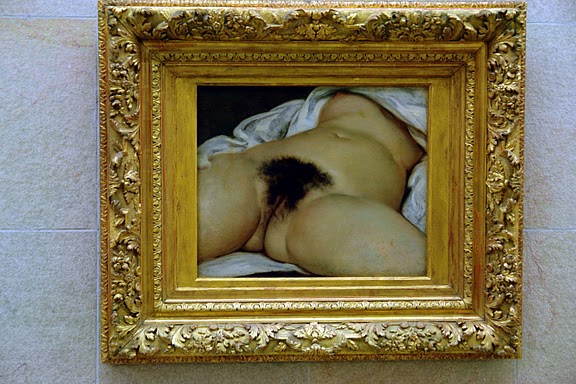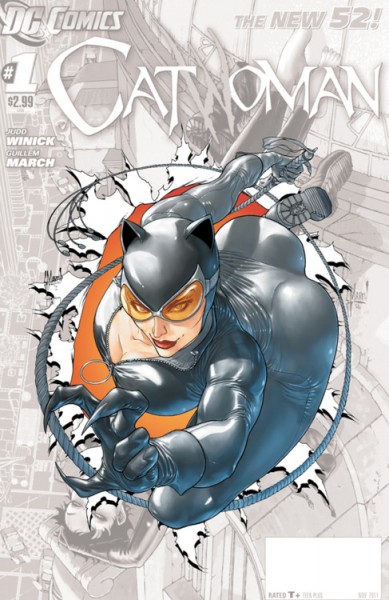This is part of the Gay Utopia project, originally published in 2007. It was reprinted in Julia Serano’s book Excluded: Making Feminist and Queer Communities More Inclusive which everyone should buy, damn it. A map of the Gay Utopia is here.
__________
If one more person tells me that “all gender is performance” I think I am going to strangle them. What’s most annoying about that sound-bite is how it is often recited in a somewhat snooty “I-took-a-gender-studies-class-and-you-didn’t” sort of way, which is ironic given the way that phrase dumbs down gender. It is a crass oversimplification that is as ridiculous as saying all gender is genitals, all gender is chromosomes, or all gender is socialization. In reality gender is all of these things and more. In fact, if there’s one thing that every person in this room should be able to agree on, it’s that gender is a confusing and complicated mess. It’s like a junior high school mixer where our bodies and our internal desires awkwardly dance with one another and with the external expectations that other people place on us.
Sure, I can perform gender if I want. I can curtsy or throw like a girl or bat my eyelashes. But performance doesn’t explain why some behaviors and ways of being come more naturally to me than others. It offers no insight into the countless restless nights I spent as a pre-teen wrestling with the inexplicable feeling that I should be female. It doesn’t capture the very real physical and emotional changes I experienced when I hormonally shifted from testosterone to estrogen. Performance doesn’t begin to address the fact that, during my transition, I acted the same — wore the same t-shirts, jeans and sneakers that I always had — yet once people started reading me as female they began treating me very differently. When we talk about my gender as though it were a performance, it seems to me that we let the audience — with all of their interpretations, prejudices and assumptions — completely off the hook.
I know that many contemporary queer folks and feminists embrace mantras like “all gender is performance”, “all gender is drag” and “gender is just a construct”. They seem empowered by the way these sayings give the impression that gender is merely a fiction. A facade. A figment of our imaginations. And of course, this is a convenient strategy, provided that you are not a trans woman who lacks the means to have her legal sex changed to female, and who thus runs the real risk of being locked up in an all male jail cell. Provided that you’re not a trans man who has to navigate the discrepancy between his male identity and female history during job interviews and first dates. Whenever I hear someone who has not had a transsexual experience say that gender is just a construct or merely a performance, it always reminds me of that Stephen Colbert gag where he insists that he doesn’t see race. It’s easy to fictionalize an issue when you are not fully in touch with all of the ways in which you are privileged by it.
Almost every day of my life I deal with people who insist on seeing my femaleness as fake. People who make a point of calling me effeminate rather than feminine. People who slip up my pronouns only after they find out that I’m trans, but never beforehand. People who insist on third-sexing me with labels like MTF, boy-girl, he-she, she-male, ze & hir — anything but simply female. Because I’m transsexual, I am sometimes accused of impersonation or deception when I am simply being myself. So it seems to me that this strategy of fictionalizing gender will only ever serve to marginalize me further.
So I ask you: Can’t we find new ways of speaking? Shouldn’t we be championing new slogans that empower all of us, whether trans or non-trans, queer or straight, female and/or male and/or none of the above?
Instead of saying that all gender is this or all gender is that, let’s recognize that the word gender has scores of meanings built into it. It’s an amalgamation of bodies, identities and life experiences, subconscious urges, sensations and behaviors, some of which develop organically, and others of which are shaped by language and culture. Instead of arguing that gender is any one single thing, let’s start describing it as a holistic experience.
Instead of dismissing all gender as performance, let’s admit that sometimes gender is an act, and other times it isn’t. And since we can’t get inside one another’s minds, we have no way of knowing whether any given person’s gender is sincere or contrived. Let’s fess up to the fact that when we make judgments about other people’s genders, we’re typically basing it on our own assumptions (and we all know what happens when you assume, right?)
Let’s stop claiming that certain genders and sexualities reinforce the gender binary. In the past, that tactic has been used to dismiss butches and femmes, bisexuals, trans people and our partners, and feminine people of every persuasion. Gender is not simply some faucet that we can turn on and off in order to appease other people, whether they be heterosexist bigots or queerer-than-thou hipsters. How about this: Let’s stop pretending that we have all the answers, because when it comes to gender, none of us is fucking omniscient.
Instead of trying to fictionalize gender, let’s talk about all of the moments in life when gender feels all too real. Because gender doesn’t feel like drag when you’re a young trans child begging your parents not to cut your hair or not to force you to wear that dress. And gender doesn’t feel like a performance when, for the first time in your life, you finally feel safe and empowered enough to express yourself in ways that resonate with you, rather than remaining closeted for the benefit of others. And gender doesn’t feel like a construct when you finally find that special person whose body, personality, identity and energy feels like a perfect fit with yours. Let’s stop trying to deconstruct gender into non-existence and instead start celebrating it as inexplicable, varied, profound and intricate.
So don’t dare dismiss my gender as a construct, drag or a performance, because my gender is a work of non-fiction.



